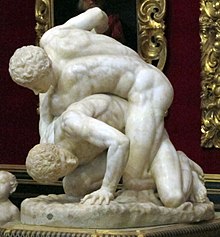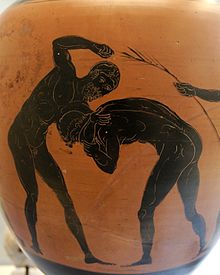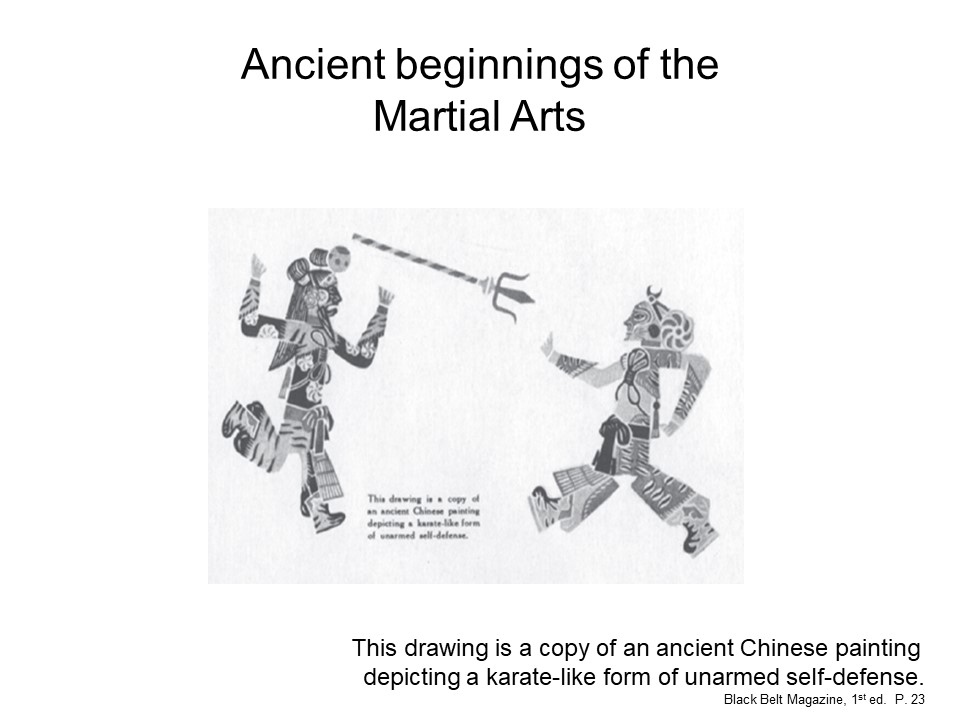“In the broadest sense, karate, like all other means of barehanded fighting, must have originated together with Mankind itself, for the earliest men were constantly at battle either with the beasts around them or with each other. Karate as an organized technique, however, did not appear until men began to live together in communities. Because at this state in the growth of civilization groups of people all over the planet developed styles of fighting that resembled karate, it would be improper to say that karate originated either in the Orient or in the Occident, though the way of karate, as it is known today, is definitely Oriental.”
(Masutatsu (Mas) Oyama “This is Karate”, 1965.)
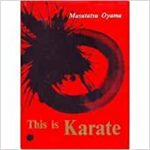
HISTORY AND THE MARTIAL ARTS
Normally, a modern-day karate student, if he learns history about his art, is told Japan and Okinawa is where karate started. However, the word “karate” wasn’t applied as a technical term until 1936 when a group of karate masters from Okinawa gathered together and decided this is what this empty-hand art should be called.
In fact, kara (empty) and te (hand), is about as self-explanatory as it comes. But empty-hand fighting didn’t start in Okinawa, or Japan, or even China. Martial arts students are taught that Chinese boxing (kungfu or quanfa) started with Boddhidharma (Da Mo) crossing the Himalayas to China from India where he ended up at the Shaolin temple, and that their particular style is an offshoot of all three of these countries in a round-about way.
As a student of martial arts history, this scenario left many questions. As a student of Tomari-te, I had a lot of questions. The masters tell us karate came from te, but there isn’t much literature on the origins of this Okinawan fighting art, and next to nothing about Tomari-te.
TWO QUESTIONS ABOUT THE ORIGIN OF KARATE
- Where did te come from, and why is little said about Tomari? The neighboring villages of Naha and Shuri are credited as the foundation of karate, but where did te come from?
This is where the history gets a little murky. I will delve into the Okinawan history of te at a later time, but first, let us address this question:
2. Where did Da Mo learn the martial arts? Did he have a vision while he was meditating in his cave at the Shaolin Temple for nine years, and came up with this ah-ha moment about how to defend oneself? Or did he come from India having been trained in the martial arts?
Most martial art historians credit Bodhidharma (460-534 BCE) as the founder of the martial arts. Da mo – Bodhidharma or Da mo, or Daruma (Japanese). Da mo is the name I will be using when referring to this monk who journeyed a great distance to pass on his knowledge.
In my research for this project, Master Oyama is the only author who has mentioned the history, as he knew it, of earliest man having some sort of self-defense at his disposal. His was forward thinking, because there was little knowledge in his time of the civilizations that came before us. Many things about civilization have been discovered since 1965. Archeology has come a long way in the last 50 years with the discovery of civilizations older generations had no idea existed.
Even into the 1990’s there wasn’t much said about the evolution of karate outside of Okinawa. The old karate masters of karate also had no idea of where their art began, other than what they were taught, and this accounts for the lack of solid information pre-17th century Okinawa.
In fact, Da Mo did come to China with knowledge of the martial arts, and ended up at the Shaolin Temple in 527 BCE. He hailed from India, possibly Madras on the eastern coast of India; where he entered the priesthood of Buddhism and became the 28th patriarch of the Buddhist faith. He was also an accomplished martial artist. He had two books, and with these he instructed the monks at the Shaolin temple by building their bodies through physical training, and their minds through discipline and meditation. (There is some controversy about how and when these books appeared, but we will address that another time.)
WHERE DID BARE-HANDED FIGHTING ORGINATE?
If karate, like all other means of barehanded fighting, originated with Mankind itself, then where did barehand fighting originate? Perhaps you imagine a caveman carrying a large stick or a mastodon’s thighbone for a weapon. From the earliest time, man has had to defend himself against aggressors. Watching out for hungry wild animals and greedy neighbors probably took up most of the caveman’s day, and as time went on, he became more skilled at how he defended himself.
You have to give the human race kudos for being imaginative and inventive. The hallmark that has keep us alive and on this planet for as long as we have is our innovative spirit. Always trying to improve on what is. The wheel evolved this way, and it makes sense to surmise weapons also evolved this way.
Here is a timeline of ancient civilizations relevant to this discussion:
Rome 753 – 476 BCE
Persia 550 – 331 BCE
Greece 2700 – 479 BCE
China 1600 – 1046 BCE
Danube 3500 – 550 BCE
Indus 2600 – 1900 BCE
Jiahu 7000 – 1700 BCE
‘Aiu Ghazal 7200 – 5000 BCE
Catalokoyuk 7500 – 5700 BCE
I have included only the civilizations that thrived in the countries that most affected the development of the martial arts. Other than the crossing of the Bearing Strait, until the 1500’s, the South and North American and Mesoamerican cultures were isolated from the neighbors across the sea.
The oldest civilization recorded is the Catalkoyuk settlement in today’s Turkey that existed from 7500 to 5700 BCE. A civilization evolved when nomadic hunter/gatherers decided to settle down into a community and build houses and began farming and raising animals for food instead of foraging.
The earliest recorded civilization in China was the Jiahu settlement (7000 to 5700 BCE.). It was located in the Henan province; is it ironic that the first Shaolin Temple was also located in the Henan province many centuries later? This was a civilization that left behind pottery, and a stone flute made from one wing bone of the red-crowned crane and “Neolithic grog”, the first people that used fermentation to turn grapes into wine.
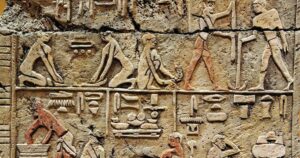
We will explore this interesting culture more in depth at a later time, but for now, it is just an example of how people lived more than 9,000 years ago. The Bronze Age started up around 3000 BCE., and that is when weaponry started taking off. By the end of the Iron Age (1500 – 1200 BCE.) they were able to combine different alloys with the bronze, and when steel was discovered, the weapon industry boomed!
With the exception of the Indus civilization (2600 – 1900 BCE.), weapons en masse are found at excavation sites of the other settlements. Interestingly, the people of this culture had no need for war!
THE ADVENT OF PANKRATION
Every successful civilization conquered other civilizations. Each civilization had a military. Marauding warriors and conquests over land were just as prevalent then as they are now. Other than what was practiced in the different civilizations, there was no formalized means of fighting until the 33rd Olympics in Greece (648 BCE.) when pankration was held as competition.
The Greeks give credit to the mythological gods Hercules and Theseus for inventing pankration. Ancient drawings show these two gods wrestling and boxing. Pankration is much like today’s karate, using many of the same techniques of punching, kicking, grappling, chokes, takedowns and joint locks. There was no gouging or biting, but everything else was fair game. There was also a similar style during that time that used animal hides on their hands but did not allow kicking or throwing. In 479 BCE., when the Persians overtook the mountain pass at Thermopylae, a small group of Athenian Greeks (trained in pankration) put up a good fight and held off the Spartans for three days before their leader was killed and they lost the battle. The Persians remarked on the excellent fighting skills of the Greeks.
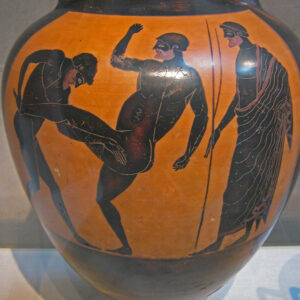
King Phillip, father of Alexander the Great (356-323 BCE.), inherited a weak army and made it the strongest in the world. He practiced pankration and used this discipline to train his troops. he gave them uniforms and changed their short swords to long 18-foot spears. After the death of Phillip, Alexander continued in his father’s footsteps and trained his Great Macedonia phalanx in this fighting style. The Macedonia warriors were an elite part of Alexander’s army because of their great strength and fighting abilities.
Upon his conquering of Alexandria, Alexander left his wounded in the city while he completed his conquests. His Macedonia warriors married Greco-Bactrian women, the kingdom that extended as far east as Seres – (the name by which the Greeks and Romans knew China). Seres – the land where silk came from.
CHINA WANTED WAR HORSES
The East/West trade began during the Han Dynasty (206 BCE – 220 CE) King Wu was a forward-looking man, and this was a deeply rich culture. The history of China is quite interesting, and here you can read about some of the contributions the Han Dynasty made to the world. King Wudi was troubled by the Xiongnu people on his western and northern borders. In 138 B.C.E., he sent his trusted emissary, Zhang Qian, to the west to appeal to the Bactrian satrap to help overcome the Xiongnu people, who were also enemies of the Bactria.
The Xiongnu were an aggressive tribe, and would maraud northern China’s borders, which is the reason the Han began to build the Great Wall – to keep the Xiognu out. They were expert horsemen, reportedly bringing 300,000 archers on horseback at one time to terrorize the Chinese. You can imagine King Wudi’s excitement when he learned from Zhang Qian that the Bactrian satrap was willing to trade horses for China’s products. The western horses were faster and leaner than the horses and chariots used by the Chinese, which made a better match against the warring Xiongnu.
Not only did King Wudi begin building the Great Wall, but he built the Silk Road, as well.
Actually, the Silk “Road” is a series of different routes between China and the West. It was a network of trade routes built by the Han Dynasty in 130 BCE and lasted until 1453 CE when the Ottomans closed the road. The first road was King Wudi’s single silk road, and closure of these routes by the Ottomans sent the Europeans exploring water routes to replace the land routes.
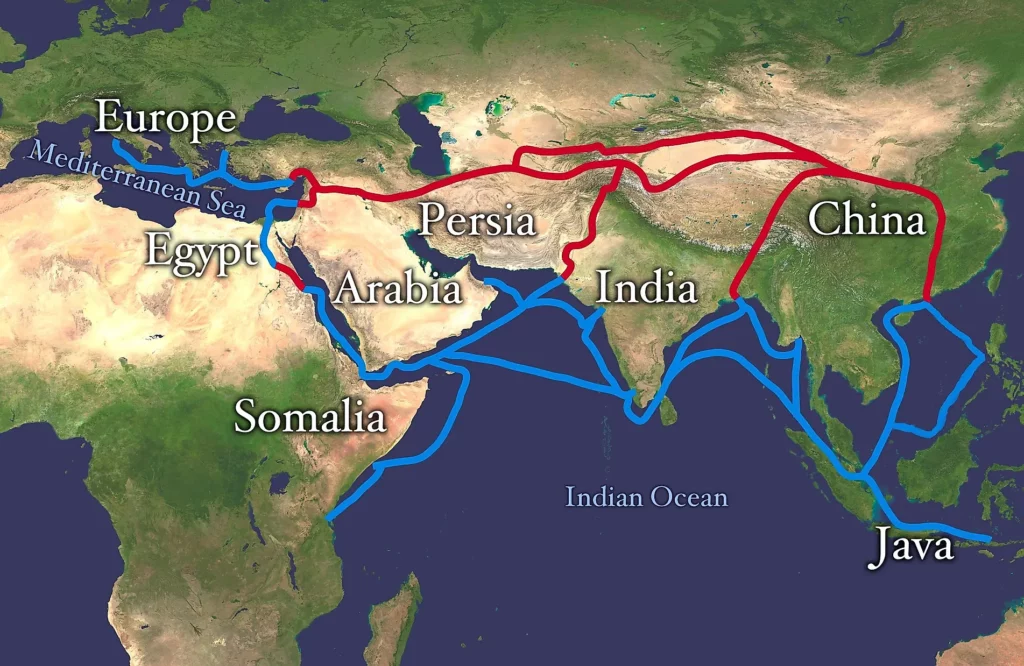
The world was a busy place back in the day. People traveled and traded goods all over the known world. Once the Silk Road was completed, it opened up travel over some of the most treacherous landscape in the world. Crossing the Gobi Desert and circumnavigating the Himalayas was a challenge for travelers and had kept China isolated from the rest of the world for centuries. The Silk Road solved that problem, and trade between the East and West began in earnest.
Trade not only of goods, but of religion – and of the martial arts. Up until the Olympics, warfare was developed among the individual armies. The official designation of pankration as an Olympic sport brought it great fame, and generals, like Phillip and Alexander, saw how it would add value to the training of their troops.
When Alexander dropped his injured troops off in Alexandria, it seems logical that this fighting art was introduced into the Indian culture, and that Alexander’s troops taught the people martial arts and it spread from there. But DaMo was experienced in a much more ancient art, a martial art developed in India, and this is the art he brought to China. As you will see, Alexander’s troops may have spread their martial arts, but on further examination, it was more of an exchange of techniques, rather than introducing anything new.
Over time the martial arts and Buddhism flourished side by side. Together with the moral teachings of Buddhism, thanks to the massive movement of people and ideas around the world, he introduced the beginnings of the martial arts as we know them today.
